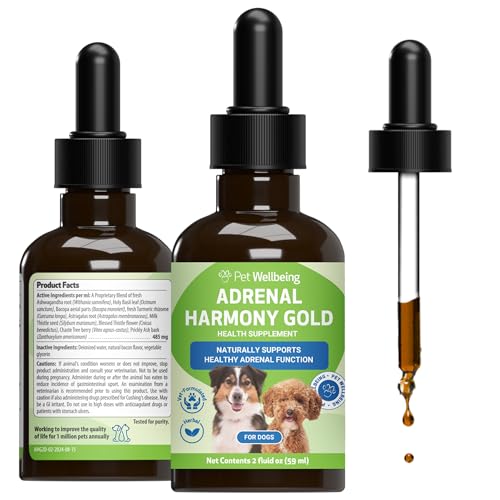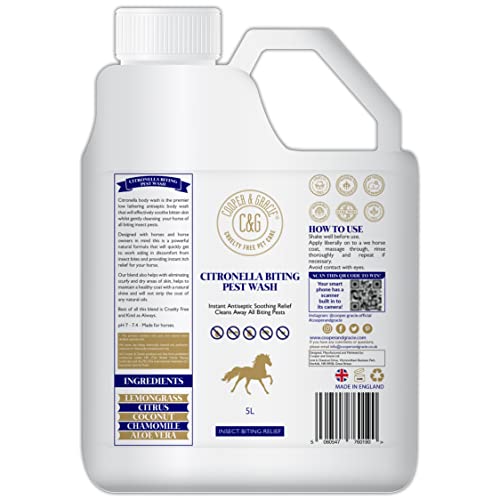




When you spot unusual symptoms on your pet, immediate action is crucial. Red, scabby patches and excessive scratching are warning signs indicating the presence of skin parasites. Pay close attention to areas around the ears, elbows, and belly; these spots often reveal telltale signs of infestation.
In my experience, I noticed my furry companion constantly itching and losing fur in patches. Upon closer inspection, I found small, white specks moving across his skin, which turned out to be the cause of his discomfort. It’s vital to examine your pet’s skin regularly for any signs of irritation or unusual changes in coat condition.
If you suspect a skin parasite, consult a veterinarian for a definitive diagnosis. They may perform skin scrapings or other tests to identify the issue accurately. Treatment usually involves medicated shampoos, topical solutions, or oral medications tailored to your pet’s specific needs. Quick intervention can prevent further complications and help restore your pet’s health.
Mite Infestation Symptoms on Canines
Identifying an infestation early is key to effective treatment. Here are some specific signs to observe:
- Skin Irritation: Look for areas of redness, swelling, or inflammation. This often appears on the belly, ears, and around the eyes.
- Hair Loss: Patches of fur may fall out, typically in circular patterns. This can be noticeable on the face, legs, or back.
- Itching and Scratching: Excessive scratching, rubbing against surfaces, or biting at the skin are common behaviours. Watch for your pet’s discomfort.
- Crusty or Scabby Skin: Check for scabs or crusts that may form due to scratching. This can lead to secondary infections.
- Odour: A foul smell may emanate from affected areas, indicating potential bacterial infection.
Behavioural Changes
Noticeable changes in behaviour can also signal an issue:
- Increased Restlessness: Pets may seem more agitated or restless, unable to settle down.
- Change in Appetite: An infested animal might lose interest in food due to discomfort.
- Withdrawal: Some pets may isolate themselves, avoiding interaction with humans or other animals.
Regular inspections and vigilance can help maintain your pet’s health. If you observe these symptoms, consult a veterinarian promptly for an accurate diagnosis and treatment plan.
Identifying Common Types of Mange Mites
Two primary varieties exist that affect our furry companions: Sarcoptes scabiei and Demodex canis. Each has distinct characteristics that can help in identification.
Sarcoptes Scabiei
This species is microscopic and responsible for sarcoptic mange. A telltale sign of an infestation is intense itching, often resulting in hair loss and inflamed skin. Affected areas typically include the ears, elbows, and belly. Scratching can lead to secondary infections, making immediate attention necessary.
Demodex Canis
Unlike Sarcoptes, this mite resides in the hair follicles of canines. Demodex canis is often present in small numbers without causing harm. However, when the immune system is compromised, it can proliferate and lead to demodectic mange. Look for patchy hair loss, especially around the eyes, mouth, and forelimbs. The skin may appear red and irritated, and secondary infections can also occur.
Regular grooming and skin checks can help catch issues early. If you suspect a problem, consult a veterinarian for proper diagnosis and treatment options.
Visual Symptoms of Sarcoptic Mange
Pay close attention if you observe intense itching and irritation on your pet. Redness and inflammation are often the first signs to notice. It’s common to see areas of hair loss, particularly around the ears, elbows, and abdomen. These patches can become scaly and crusted, leading to secondary infections.
Skin Condition and Inflammation
Flaky, dry skin may accompany the redness, with some areas developing a thickened texture. You might spot small bumps or pustules that can be painful for your furry friend. If you notice a strong, unpleasant odour coming from the skin, it often indicates a secondary infection, which requires immediate attention.
Behavioural Changes
Increased scratching and biting at the skin are clear indicators of discomfort. You may also see your pet becoming more withdrawn or anxious due to the relentless itching. Changes in sleeping habits or decreased appetite could signal that your dog is feeling unwell and should prompt a visit to the vet.
Signs of Demodectic Infestation in Canines
Observe for patchy hair loss, particularly around the eyes, muzzle, and ears. This can often lead to bald spots that may appear red or inflamed. The affected areas might also develop a scaly texture, indicating irritation beneath the surface.
Skin Irritation and Inflammation
Pay attention to signs of excessive itching or scratching. Although this condition typically causes less itching than other types of skin issues, any signs of discomfort should prompt a closer look. Redness or swelling can indicate a secondary infection, which may require veterinary intervention.
Odour and Discharge
A foul smell emanating from the skin is often a telltale sign of a problem. You might notice a discharge that can be yellow or greenish, suggesting an infection. This warrants immediate veterinary attention as proper treatment can prevent further complications.
Keep an eye on your pet’s overall behaviour. If they seem more lethargic than usual or exhibit changes in appetite, it could be linked to the underlying skin condition. Regular check-ups with your vet will help in maintaining your furry friend’s health and addressing any issues promptly.
Differences Between Sarcoptic and Demodectic Infestations
Identifying the type of infestation is critical for effective treatment. Sarcoptic infestations, often referred to as scabies, are highly contagious and can spread between animals and even humans. These tiny creatures burrow into the skin, causing intense itching and irritation. Affected areas usually include ears, elbows, and belly. You may notice red, inflamed patches, and hair loss in these areas, often leading to secondary infections due to scratching.
In contrast, demodectic infestations arise from the Demodex mite, naturally present on a healthy canine’s skin. They typically manifest in localized patches, often around the eyes, mouth, and legs. While localized cases may resolve without intervention, generalized demodicosis can occur in dogs with weakened immune systems, leading to widespread skin issues. This type usually presents with hair thinning, a greasy or crusty texture, and sometimes a foul odour.
Treatment varies significantly between the two types. For sarcoptic cases, topical treatments and systemic medications are common to eliminate the infestation and soothe the skin. In the case of demodectic situations, addressing any underlying health issues is vital, alongside topical treatments or oral medications to manage the population of mites.
In summary, understanding the differences between these two types can help you act quickly and ensure your furry friend receives the right care. Early intervention is key to preventing complications and promoting healing.
How to Examine Your Dog for Mange Mites
Inspect your canine friend in a well-lit area. Start by gently stroking their fur to check for any unusual sensations or areas of discomfort. Pay close attention to the following regions:
- Ears: Check the insides for redness or excessive scratching.
- Face: Look around the eyes and mouth for any skin irritation or hair loss.
- Elbows and Hocks: These areas are prone to irritation and should be examined carefully.
- Tail: Look for any signs of inflammation or hair thinning.
Be on the lookout for specific signs such as:
- Itching: If your pup is scratching more than usual, it could indicate a problem.
- Redness or Inflammation: Notice any areas that are inflamed or appear irritated.
- Hair Loss: Patchy spots or thinning fur may signal an issue.
- Scabs or Crusts: Any lesions or scabs can be a sign of a skin condition.
If you suspect an infestation, consult your veterinarian for a definitive diagnosis and treatment options. Regular grooming can help monitor your pet’s skin health and catch any issues early. Additionally, consider providing them with the best single ingredient dog food to support their overall wellness.
When to Consult a Veterinarian
If you notice excessive scratching, hair loss, or skin irritations on your pet, it’s time to seek professional help. Early intervention can prevent further complications. If your furry friend develops red, inflamed patches or crusty lesions, don’t hesitate to contact your vet.
Watch for signs of discomfort, such as restlessness or changes in behaviour. If your companion seems unusually lethargic, loses appetite, or displays signs of pain, a vet visit is warranted. These symptoms may indicate a more severe underlying issue.
Pay attention to any secondary infections, such as oozing or foul odours from the skin. These can be indicators that immediate care is necessary. If your pet is experiencing severe itching that disrupts their daily life, it’s crucial to get a professional opinion.
For pets with a history of skin conditions, regular vet check-ups are advisable. It’s better to be proactive than reactive. If you suspect your dog has come into contact with other animals showing similar symptoms, consult your veterinarian to ensure proper diagnosis and treatment.
Remember, timely action can lead to a quicker recovery and a happier, healthier pet. Don’t wait for symptoms to worsen; your veterinarian is the best resource for ensuring your companion’s well-being.
Preventative Measures Against Mange Infestations
Regular grooming is key. Brush your canine companion weekly to remove dead hair and skin, reducing the chance of infestation. Pay attention to areas prone to irritation, like the ears and belly, where these pests often thrive.
Hygiene Practices
Maintain a clean environment. Wash bedding and toys frequently in hot water. Vacuum carpets and furniture to eliminate any potential eggs or larvae. This reduces the risk of your furry friend coming into contact with unwanted guests.
Health Monitoring
Keep an eye on your pet’s skin condition. Any signs of excessive scratching or irritation should prompt immediate action. Regular veterinary check-ups help catch any issues early, ensuring your pup remains healthy and happy.
| Preventative Measure | Description |
|---|---|
| Regular Grooming | Brush weekly to remove dead hair and skin. |
| Clean Environment | Wash bedding and vacuum areas frequently. |
| Health Monitoring | Check for signs of irritation or scratching. |
| Limit Outdoor Exposure | Avoid areas where infected animals may roam. |
| Use Preventative Treatments | Discuss topical or oral treatments with a vet. |
Limit exposure to environments with known infestations. Avoid parks or areas where other animals may be affected. Consulting with a veterinarian about preventative treatments provides additional assurance, keeping your pet safe and sound.









